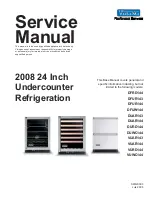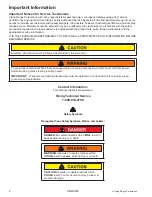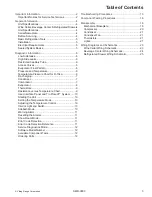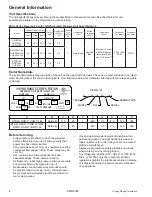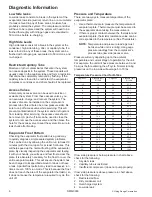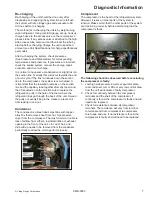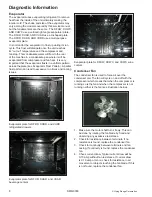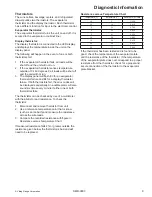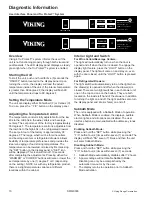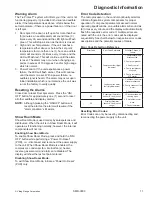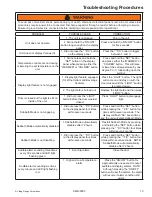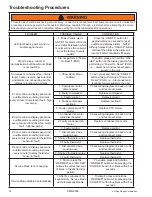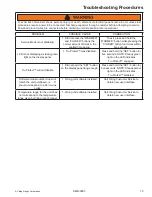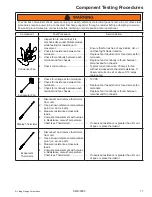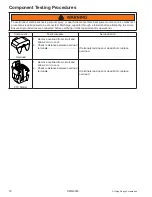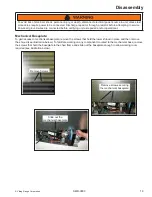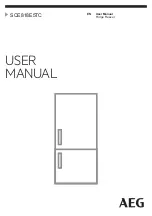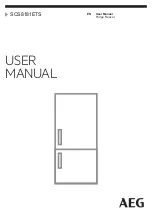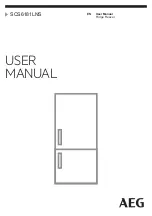
General Information
© Viking Range Corporation
SMR-0003
5
Sealed System Basics
The following should always be practiced with any
sealed system that has been opened.
ONLY OPEN
THE SEALED SYSTEM AS A LAST RESORT AND
AS A FINAL DIAGNOSIS
. Always check other areas of
operation such as wiring, airflow, thermostat, etc. before
opening up the sealed system. Many times these areas
can resemble sealed system problems. The diagnosis
of a sealed system can be determined by accurate
pressure and temperature measurements. Also,
checking the evaporator frost pattern is a great way to
tell if a charge is adequate within a system.
Use a leak detection system that will detect R-134a
1.
refrigerant. Leaks need to be found on any leaking
system
BEFORE
the repair takes place.
The drier must be replaced anytime the sealed
2.
system is opened. Always use a new drier. Failure
to do so may cause repeated system failure in the
future.
Limit time the system is opened.
3.
DO NOT EXPOSE
THE OPEN SYSTEM FOR MORE THAN 15
MINUTES
. This will result in sealed system failure.
Leave replacement parts sealed and/or pressurized
until ready to install.
The compressor must be replaced if there is a low
4.
side leak. Moisture has been drawn into the system
if the unit has been running for an extended period
of time. Be sure to flush the system with dry nitrogen
gas and evacuate to 50 microns before re-charging
(see Low Side Leaks).
A new evaporator assembly must be ordered if the
5.
capillary tube is found to be plugged or severely
restricted. Restrictions cannot be flushed out.
Be sure to purge the system with dry nitrogen gas
6.
after final brazing. This will flush out any air or
moisture that may have entered the system before
being absorbed into the ester oil.
Basic Refrigeration Tools
The following list contains some of the tools required for
basic refrigeration repairs:
Hoses with R-134a couplers (must meet standards
•
for handling R-134a refrigerant)
Approved and certified recovery system for R-134a
•
Manifold gauge set for R-134a
•
Charging cylinder with R-134a
•
Weight scale (preferably in ounces to the nearest
•
tenth of an ounce)
Access valves
•
Small and large tubing cutter
•
Brazing torch
•
Swaging tools
•
Multimeter
•
Leak detection equipment for detection of R-134a
•
Standard hand tools (assorted Phillips and standard
•
screwdrivers, sockets, Allen wrenches, adjustable
wrenches, etc.)
Rivet gun and assorted rivets
•
Drill motor and assorted metal drills
•
Installation
Unit can be installed freestanding or built-in. The
•
front of the unit must be unobstructed for proper air
circulation and operation at all times.
Area should be ventilated and without extreme
•
temperatures.
Unit must be installed away from the elements of
•
nature. Do NOT use the unit outdoors unless it is
U.L. approved for outdoor use; doing so may void
any warranties.
Unit must be on a
•
LEVEL
surface capable of
supporting the loaded weight of the unit.
ELECTRICAL SHOCK HAZARD
-Failure to follow
these requirements could result in personal injury,
electrical shock, or fire.
Electrical Requirements
115 VAC, 60 Hz., single phase power is needed
•
Use an outlet with a 15 amp delayed action fuse
•
or circuit breaker.
DO NOT PUT A FUSE ON THE
NEUTRAL OR GROUND OF THE CIRCUIT
.
Properly grounded outlet is required for this unit.
•
It is recommended that a single circuit receptacle
•
be used for this unit only.
DO NOT USE AN
EXTENSION CORD
.

